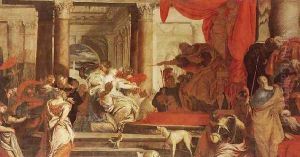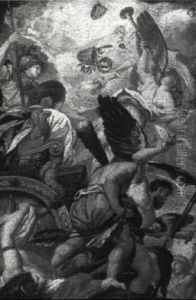Filippo Gherardi Paintings
Filippo Gherardi was an Italian painter of the Baroque period, born in Lucca in 1643 and passing away in 1704. His work, which primarily spanned the latter half of the 17th century, is characterized by dynamic compositions, a vivid use of color, and a flair that reflects the theatricality of the Baroque era. Gherardi was not only a prolific painter but also a significant figure in the cultural landscape of Italy during his time, contributing to the artistic heritage of regions beyond his native Lucca.
Gherardi's artistic journey began under the guidance of Pietro Paolini, a prominent Lucchese painter known for his Baroque style and influence on younger artists. This initial training laid the foundation for Gherardi's development into a masterful painter, skilled in depicting religious and mythological scenes with an emotional depth and technical precision. His work often featured dramatic effects of light and shadow, a hallmark of Baroque art, which helped to convey the spiritual and emotional intensity of his subjects.
Throughout his career, Filippo Gherardi collaborated with several other artists, including the renowned Roman painter, Giovanni Coli. Together, they worked on various projects, including the decoration of the Palazzo Buonvisi in Lucca and the execution of frescoes in the Palazzo Labia in Venice, showcasing Gherardi's versatility and adaptability in different artistic environments. These collaborations were not only a testament to his talent and creativity but also to his ability to work harmoniously with others to achieve a common artistic vision.
One of Gherardi's most notable projects was his work in the Church of San Michele in Foro, Lucca, where his frescoes continue to be admired for their beauty and expressive power. His ability to imbue his religious subjects with a sense of divine presence and emotional depth made his work particularly suited to ecclesiastical settings, where the art served not only an aesthetic purpose but also a devotional one.
Filippo Gherardi's legacy is that of a distinguished Baroque painter whose works contributed to the richness of Italian art during a period of intense creativity and innovation. His paintings and frescoes, characterized by their emotional intensity, technical skill, and dramatic use of light, continue to be studied and admired for their artistic significance and beauty. Gherardi remains a figure of importance in the history of Italian art, remembered for his contributions to the Baroque style and his role in the cultural life of 17th-century Italy.

